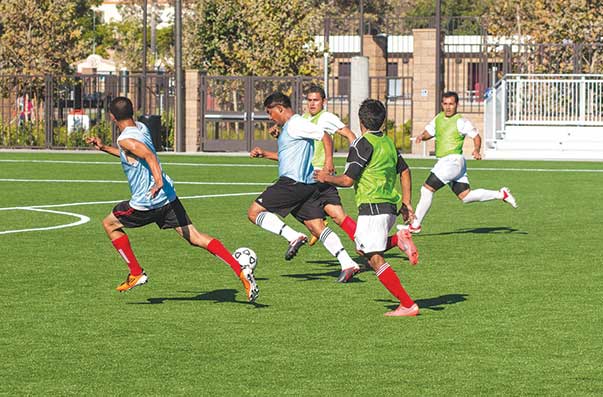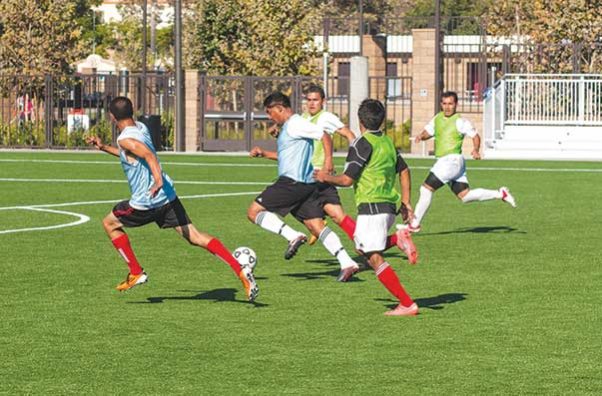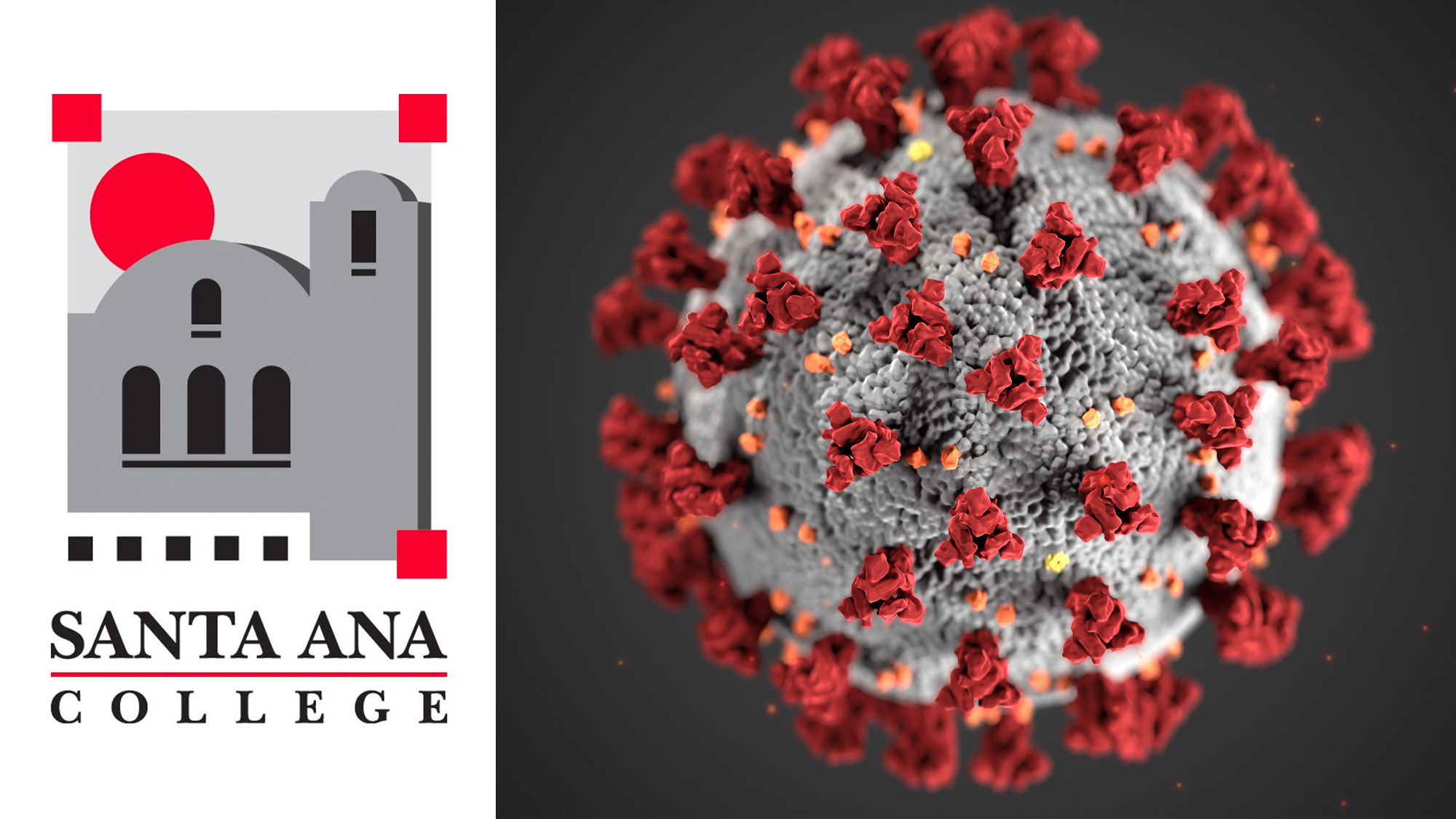
By: Shane Collins
After a year and a half of construction a state-of-the-art multimillion dollar soccer field was inaugurated July 8. It’s the second athletic facility constructed at Santa Ana College within a span of five years, both financed by Measure E bond funds.
The facility is equipped with a synthetic grass turf, roofed player benches, a media section, a concession stand and bleachers that can accommodate up to 500 spectators.
“We always try to create a stadium atmosphere for our athletes, and something like this is comparable to a big university’s field,” Dean of Athletics Avie Bridges said.
The new digs are a vast upgrade to the old field, with modern amenities replacing the rudimentary setup that once hosted the Dons’ home games.
But it may come with a cost beyond the $5.6 million price tag. Coaches and trainers worry about the potential likelihood of injuries and infections associated with synthetic turf.
Because the simulated grass is made of tougher material, it can lead to more skin abrasions, known as “turf burn,” Athletic Trainer Nora Schug said. Combined with the higher temperatures that come with the synthetic grass, the new field could become a breeding ground for infection.
On-field temperatures may rise up to 165 degrees on hot days, said Athletic Trainer Gary Kinney.
The SAC grounds crew plans to water the field to reduce the temperature by game-time. It cools down to an average of about 120 degrees, roughly equivalent to peak summer temperatures in Qatar, a small desert nation in the Middle East that will host the FIFA World Cup in 2022.
Kinney adds an increased likelihood of knee injuries, ACL tears and ankle sprains to the list of potential health complications brought on by the turf.
“I am personally not thrilled about the field. It causes more knee injuries,” Kinney said. “At least players won’t have to worry about divots and sprinkler heads.”
Heeding the trainers’ concerns, Head Coaches Jessica Rapoza and Jose Vasquez focused the men’s and women’s teams summer preparation on strength training and conditioning.
“The velocity of the game is going to be higher and everything will move faster on that new field, so it’s important we get the two teams stronger in their lower core so they don’t get injured but can still play at the tempo we want,” Vasquez said.
The emphasis on conditioning work has some athletes feeling unprepared.
“It’s a totally different ball game because turf and grass are totally different, the turf is so much hotter to play on. We just ran a lot this summer,” said Tiffany Martinez, sophomore midfielder.
But injuries can happen regardless of where his team plays, Vasquez said.
“You get hurt no matter what field you play on, but if we can get them conditioned, we’ll be fine,” he added.
The soccer facility is available for rent, with different rates for non-profit and for-profit organizations with proof of insurance.
- The two-party system is failing us. - October 19, 2024
- Read our Fall 2023 Print: Vol. 100 No. 1 - October 23, 2023
- Santa Ana College Awarded State Department of Finance Grant - April 2, 2015












Excellent story. Well written and well reported. But, why do athletics get such a large piece of the pie when many academic programs who serve a larger audience are not funded in the same way? Most sports lose money, yet we keep dumping money into losing programs. It smack of favoritism and cuddling up to coaches.
I personally don’t like turf myself because there is a higher risk for injury, but this can become a good scenario when it relates to the conditioning of the athletes.